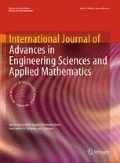Abstract
MEMS has finally become the “disruptive” technology that many predicted 30 years ago. Why did it take so long? The simple fact is that MEMS devices are seldom discrete products. Instead, they enable “disruptive” new functions in higher-level products. It takes time to recognize the value of these capabilities and to develop the higher-level products. Market maturation, technical expertise and a willingness to take financial risk fueled the recent MEMS industry growth. This paper uses examples from the past and present to identify technical and business characteristics that lead to successful high volume MEMS products. These lessons are then projected forward to identify emerging high volume MEMS opportunities.
Similar content being viewed by others
Notes
Compound Annual Growth Rate.
References
Angell, J.B., Terry, S.C., Barth, P.W.: Silicon micromechanical devices. Sci. Am. 248(4), 44–50 (1983)
Martin, J.R.: Surface characteristics of integrated MEMS in high volume production. In: Hsu, S.M., Ying, Z.C. (eds.) Nanotribology: Critical Assessment and Research Needs, chap. 14. Kluwer, Dordrecht (2002)
Martin, J.R.: High volume manufacturing and field stability of MEMS products. In: Bhushan, B. (ed.) Handbook of Nanotechnology, chap. 55, 2nd edn. Springer, Berlin (2007)
Martin, J.R.: Process for wafer level treatment to reduce stiction and passivate micromachined surfaces and compounds used therefor. U.S. Patent 7,364,942, 29 April 2008
Martin, J.R.: Low oxygen assembly of glass sealed packages. U.S. Patent 6,358,771, 19 March 2002
Potin, M.: Motion sensing applications, new opportunities for development of 3-axis accelerometers? Micronews 68, 6–7 (2008). Yole Développement SARL, Lyon April
Lindenberger, W.S., Poteat, T.L., West, J.E.: Integrated electroacoustic transducer with built-in bias. U.S. Patent 4,524,247, 18 June 1985
Baumhauer, J.C., Hershey, H.J., Poteat, T.L.: Integrated electroacoustic transducer. U. S. Patent 4,533,795, 6 Aug 1985
Busch-Vishniac, I.J., Lindenberger, W.S., Lynch, W.T., Poteat, T.O.: Integrated capacitive transducer. U. S. Patent 4,558,184, 10 Dec 1985
Martin, J.: Wafer capping of MEMS with fab-friendly metals. In: Proceedings of SPIE, Reliability, Packaging, Testing and Characterization of MEMS/MOEMS VI, January 23–24, vol. 6463 (2007), p. 64630
Author information
Authors and Affiliations
Corresponding author
Additional information
An erratum to this article can be found at http://dx.doi.org/10.1007/s12572-011-0035-x
Rights and permissions
About this article
Cite this article
Martin, J. Commercial MEMS case studies: market drivers, designs, materials and processes. Int J Adv Eng Sci Appl Math 2, 23–27 (2010). https://doi.org/10.1007/s12572-010-0013-8
Published:
Issue Date:
DOI: https://doi.org/10.1007/s12572-010-0013-8




